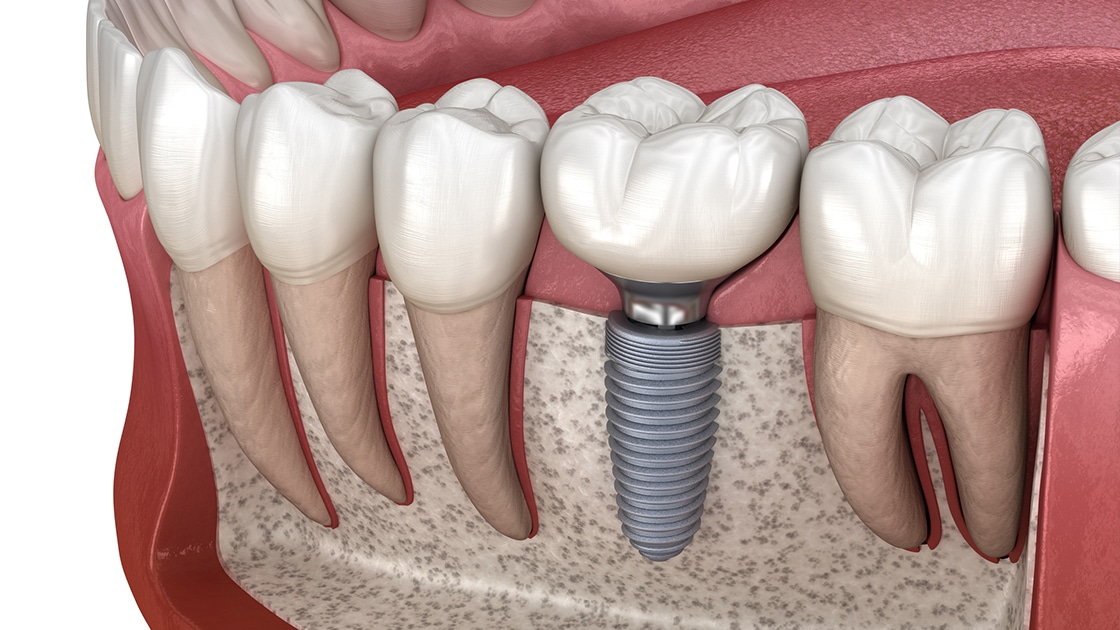The Main Principles Of Dental Sense
The Main Principles Of Dental Sense
Blog Article
About Dental Sense
Table of Contents9 Easy Facts About Dental Sense ExplainedThe Greatest Guide To Dental SenseThe Ultimate Guide To Dental SenseGetting My Dental Sense To Work
are medical tools operatively dental implanted right into the jaw to recover a person's capability to eat or their look. They provide support for fabricated (phony) teeth, such as crowns, bridges, or dentures. When a tooth is shed due to injury or illness, an individual can experience problems such as quick bone loss, malfunctioning speech, or changes to chewing patterns that cause discomfort.Dental dental implant systems include an oral implant body and oral implant joint and may also include a joint addiction screw. Cosmetic dentistry services. The dental implant body is surgically inserted in the jawbone in location of the tooth's root. The dental implant abutment is generally affixed to the dental implant body by the joint fixation screw and expands via gums into the mouth to support the attached man-made teeth
(https://www.callupcontact.com/b/businessprofile/Dental_Sense/9469240)Framework of The Oral Implant System selecting dental implants, talk with your dental provider regarding the potential advantages and risks, and whether you are a prospect for the treatment. Points to take into consideration: Your total wellness is an essential consider determining whether you are a great prospect for dental implants, the length of time it will require to heal, and how much time the implant may stay in location.
Smoking might influence the healing process and decrease the long-term success of the dental implant. The healing process for the implant body might take several months or longer, throughout which time you commonly have a momentary abutment in location of the tooth. the dental implant procedure: Very carefully follow the dental health directions offered to you by your oral provider.
Facts About Dental Sense Uncovered
Implant failing can cause the need for one more operation to take care of or replace the implant system. Restores the ability to chew Restores cosmetic appearance Helps maintain the jawbone from shrinking as a result of bone loss Maintains the health and wellness of the surrounding bone and gum tissues Helps keep nearby (neighboring) teeth stable Enhances lifestyle Damages to surrounding all-natural teeth throughout implant positioning Injury to the surrounding cells during surgical treatment, such as sinus perforation Injury during surgical procedure (for instance, crack of bordering jawbone) Insufficient feature, such as seeming like the teeth do not bite together usually An experience that the tooth is loosened or twisting in position resulting from an abutment screw loosening Implant body failure (looseness of the dental implant body) due to systemic infection, which might be most likely in individuals with uncontrolled diabetes mellitus as a result of local infection in bone and gum tissues supporting the dental implant body because of delayed healing, which might be much more likely in people who smoke Trouble cleaning the periodontals around the dental implant, leading to poor oral hygiene Neglected gum illness Post-surgical numbness because of nerve impingement or damages Constantly notify healthcare carriers and imaging service technicians that you have dental implants prior to any type of magnetic resonance imaging (MRI) or x-ray procedures.
FDA is not knowledgeable about any negative events reported for MRI or x-ray procedures with dental implants. Oral implants systems are commonly constructed from products that comply with global agreement criteria of the International Company for Standardization (ISO) or ASTM International. These criteria have details of what makes a secure product.

A dental implant is a framework that replaces a missing tooth. With screw-like gadgets, the specialist inserts an implant right into the jawbone, and it acts as a support for an artificial tooth, called a crown. A gadget called a joint links the man-made tooth to the oral implant. The crown is tailor-made to fit the person's mouth and match the shade of their teeth.
The Buzz on Dental Sense
Some individuals are not qualified for dental implant surgical treatment. It is for dental specialists to operate people with: intense illnessuncontrollable metabolic diseasebone or soft cells condition or infectionIf these problems are solved, an individual can have the surgery. In, dental specialists avoid from operating on people with: If people with any of the above undertake oral implant surgical treatment, there is a greater threat of the implant failing.

Dental dental implant surgery is an individualized process. Provide you time to recover. Affix the blog post and last crown, bridge or denture.
Next, your cosmetic surgeon will thoroughly place the oral implant right into your jaw. If your dental implant is near the front of your mouth, your dental practitioner will make a temporary tooth for you to put on till you recover.
Dental Sense Can Be Fun For Anyone
Your copyright can inform you what to expect in your circumstance. During the healing stage, your jawbone should fuse to the oral implant. This procedure, called osseointegration, is essential for stability and long-lasting success. This procedure can take anywhere from 3 to 9 months. In many cases, it might take longer.
Once your dental implant heals, your dental professional can affix the joint (small adapter article) and your final reconstruction (crown, bridge or denture). This typically takes regarding one hour to complete and might require a second small surgical treatment. You should not really feel any type of pain during your oral implant procedure because your provider will utilize drug to numb your gum tissues.
Report this page